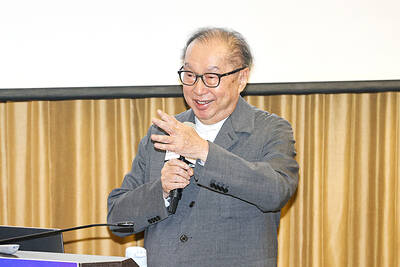Domestic sales of inkjet multifunctional peripherals (MFP) in the second quarter reached 108,818 units, representing an increase of 6.2 percent from the first quarter but a decrease of 10.2 percent from the same period last year, market researcher IDC said yesterday.
??nkjet MFP has achieved 70 percent penetration of the individual and home-based segments, but IDC?? research shows that it is also quickly gaining traction in the small business and home office segments,??IDC analyst Joey Yen (?渲?甈? said in a report yesterday.
Hewlett-Packard Co (HP) and Epson Inc dominate the local inkjet MFP market with market shares of 46.4 percent and 40.1 percent respectively. Coming in a distant third is US print and imaging company, Lexmark Corp, with an 8.3 percent market share, replacing Canon Inc in the second quarter, the report said.
??nkjet MFP manufacturers are releasing new wireless printers with fax functionality,??Yen said. ??oreover, these companies are lowering the unit price for inkjet MFP and ink cartridges, as well as launching various promotions to boost sales.??br />
??ll these additional functions and savings are luring customers away from conventional inkjet single function printers [SFP],??Yen said.
Based on IDC?? second-quarter analysis, MFP took up 65.6 percent of the entire inkjet market, leaving 35 percent, or 57,118 units, to SFP. MFP has been leading the inkjet market by a wide margin over SFP for eight consecutive quarters.

BYPASSING CHINA TARIFFS: In the first five months of this year, Foxconn sent US$4.4bn of iPhones to the US from India, compared with US$3.7bn in the whole of last year Nearly all the iPhones exported by Foxconn Technology Group (富士康科技集團) from India went to the US between March and last month, customs data showed, far above last year’s average of 50 percent and a clear sign of Apple Inc’s efforts to bypass high US tariffs imposed on China. The numbers, being reported by Reuters for the first time, show that Apple has realigned its India exports to almost exclusively serve the US market, when previously the devices were more widely distributed to nations including the Netherlands and the Czech Republic. During March to last month, Foxconn, known as Hon Hai Precision Industry

Taiwan Semiconductor Manufacturing Co (TSMC, 台積電) and the University of Tokyo (UTokyo) yesterday announced the launch of the TSMC-UTokyo Lab to promote advanced semiconductor research, education and talent development. The lab is TSMC’s first laboratory collaboration with a university outside Taiwan, the company said in a statement. The lab would leverage “the extensive knowledge, experience, and creativity” of both institutions, the company said. It is located in the Asano Section of UTokyo’s Hongo, Tokyo, campus and would be managed by UTokyo faculty, guided by directors from UTokyo and TSMC, the company said. TSMC began working with UTokyo in 2019, resulting in 21 research projects,

Ashton Hall’s morning routine involves dunking his head in iced Saratoga Spring Water. For the company that sells the bottled water — Hall’s brand of choice for drinking, brushing his teeth and submerging himself — that is fantastic news. “We’re so thankful to this incredible fitness influencer called Ashton Hall,” Saratoga owner Primo Brands Corp’s CEO Robbert Rietbroek said on an earnings call after Hall’s morning routine video went viral. “He really helped put our brand on the map.” Primo Brands, which was not affiliated with Hall when he made his video, is among the increasing number of companies benefiting from influencer

Quanta Computer Inc (廣達) chairman Barry Lam (林百里) yesterday expressed a downbeat view about the prospects of humanoid robots, given high manufacturing costs and a lack of target customers. Despite rising demand and high expectations for humanoid robots, high research-and-development costs and uncertain profitability remain major concerns, Lam told reporters following the company’s annual shareholders’ meeting in Taoyuan. “Since it seems a bit unworthy to use such high-cost robots to do household chores, I believe robots designed for specific purposes would be more valuable and present a better business opportunity,” Lam said Instead of investing in humanoid robots, Quanta has opted to invest